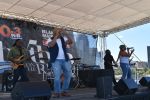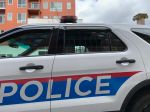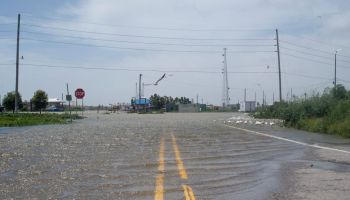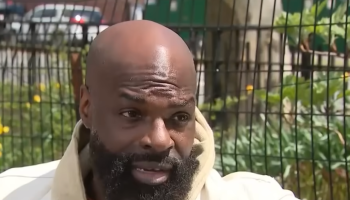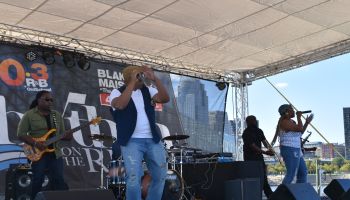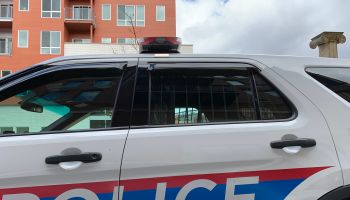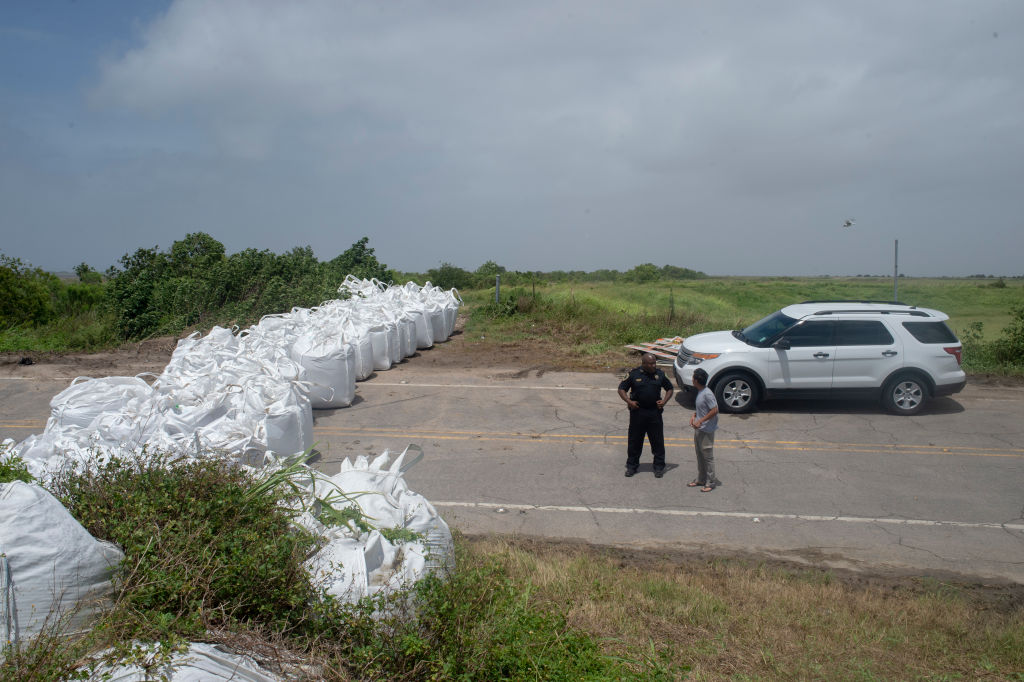
Source: SOPA Images / Getty
“Cities and parishes have issued mandatory evacuation orders,” though most New Orleans residents are remaining in the city.
Barry made landfall as a Category 1 hurricane early Saturday afternoon along Louisiana’s central coast, then immediately weakened back into a tropical storm, according to the National Hurricane Center .
The center of the storm — the first hurricane to hit the United States this year — was about 5 miles northeast of Intracoastal City and about 30 miles south-southwest of Lafayette at 2 p.m. ET and still crawling at 6 mph, with maximum sustained winds of 70 mph.
Rainfall now poses the greatest threat. Barry’s slow trek means residents from the Gulf Coast through the lower Mississippi Valley will see extended heavy downfalls that could prompt flooding that lasts into next week, forecasters said.
Dangerous coastal storm surge had overtopped levees by midday Saturday along the far reaches of Louisiana’s coast, local officials reported. Tornadoes also posed a risk from southeast Louisiana to south Alabama.
PHOTOS: Hurricane Barry nears landfall in Louisiana
Ludovico Torri said he woke Saturday to find Lake Pontchartrain lapping at his home in Mandeville, Louisiana, north of New Orleans.
“When we woke up this morning, the entire street and area under the house was under water,” he told CNN. “The waves from the lake are crashing onto the land as if it is all one big lake.”
“We’re stuck in the house with four kids, and the car is almost flooding,” Torri said, noting that within an hour and a half, the water had risen a foot. “The wind’s getting stronger, and the water is rising and rising.”
Though heavy, sustained rain still threatens the New Orleans area, fears among residents and forecasters there relaxed as a predicted storm surge on the unusually high Mississippi River happened late Friday at a lower level than anticipated, according to the National Weather Service in New Orleans .
The developing factors had called to mind for some the death and destruction wrought in 2005 by Hurricane Katrina, though the weather and flood-infrastructure circumstances are not the same.
Tanya Gulliver-Garcia, who lives in the city’s Broadmoor neighborhood, flew out ahead of Barry, leaving behind neighbors with vivid memories of the 2005 destruction, she said.
“This storm is stressing them out,” Gulliver-Garcia told CNN. “Trauma stays in your body, and Katrina left a lot of trauma behind.”
The real danger is the rain
A hurricane warning was still in effect Saturday afternoon along part of the Louisiana coast, while inland areas, including the lower Mississippi Valley, are under tropical storm warnings. Storm surge warnings along the coast extend from Intracoastal City, south of Lafayette, to Biloxi, Mississippi, and along Lake Pontchartrain.
Tropical-storm-force winds will extend up to 175 miles outward from the storm’s center.
More than 77,000 customers across Louisiana were without power Saturday morning, utility providers said. Hundreds of flights in New Orleans were canceled, and some cruise ship departures were in flux.
But as Barry heads inland, officials’ main concerns are the heavy rains and related flooding the storm is expected to usher in. The rain will still be coming down 18 to 24 hours after the storm made landfall, CNN meteorologist Michael Guy said.
Louisiana Gov. John Bel Edwards said some areas could see up to 25 inches of rain.
“The real danger in this storm was never about the wind anyway,” the governor said. “It’s always been about the rain, and that remains a very significant threat.”
Levees were overtopped Saturday in Plaquemines Parish, southeast of New Orleans, where mandatory evacuations were instituted for residents in low-lying areas earlier this week. It was not a levee for the Mississippi River, Gov. Edwards said, but a back levee near Myrtle Grove.
“We actually anticipated that the back levee would be overtopped,” he added, “so we are not surprised by what has happened.”
The overtopping occurred in multiple locations, but in less populated areas of the parish, Parish President Kirk Lepine said Saturday. He added there was concern that Highway 23 could be inundated with water and that residents who had not left the area would be unable to do so.
READ MORE: News5Cleveland.com
Article Courtesy of CNN and WEWS News 5 Cleveland
First and Second Picture Courtesy of SOPA Images and Getty Images
After Being Upgraded To a Hurricane, Barry Once Again Became a Tropical Storm was originally published on wzakcleveland.com



